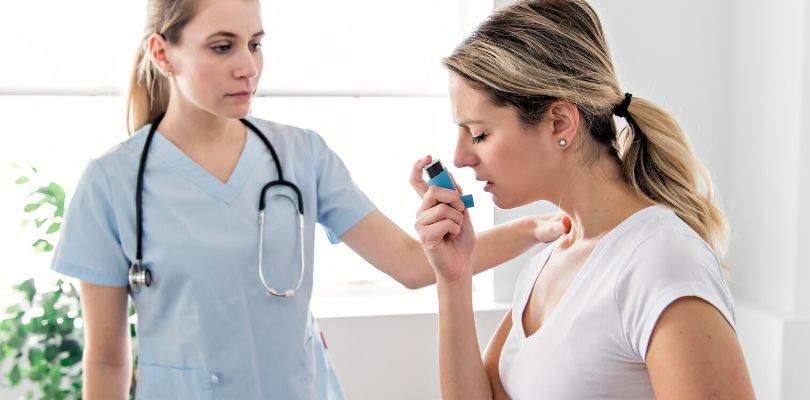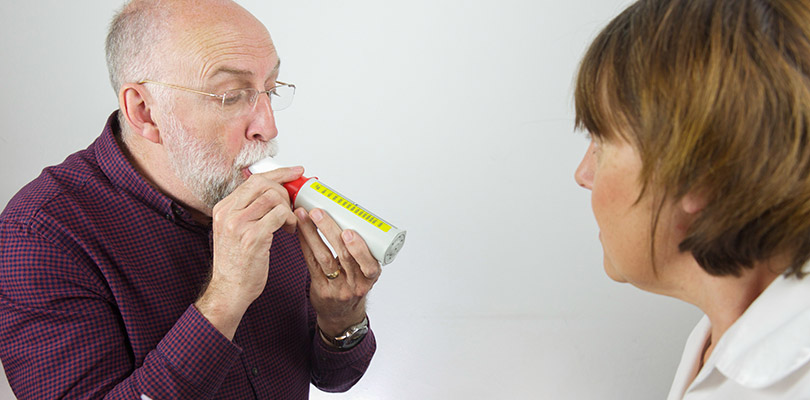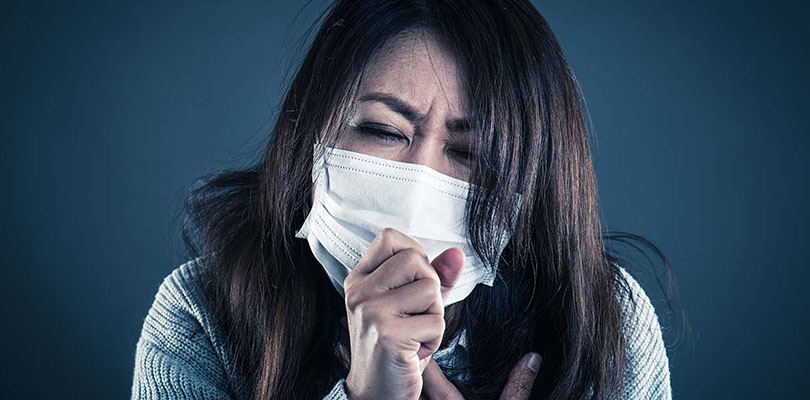COPD Diagnosis and Treatment Plans
Chronic obstructive pulmonary disease, or COPD, is a long-term or chronic respiratory disease, which affects a person’s breathing. COPD can include emphysema, chronic bronchitis, or both. According to the American Lung Association, smoking cigarettes is the main cause of COPD. A rare genetic form of COPD also occurs in a small number of people with the condition.
The genetic form affects the body’s ability to produce a protein that helps protect the lungs from damage.
Symptoms of COPD may vary, but typically include:
- Wheezing
- Shortness of breath
- Chest tightness
- Frequent coughing, which may be productive
Currently, COPD is not curable. The disease is also considered progressive, but the rate at which symptoms progress varies. Fortunately, treatment and lifestyle changes, such as quitting smoking, can help, but getting a proper diagnosis is essential to develop an effective treatment plan.
How to Get a Proper Diagnosis
COPD can have symptoms that are similar to other types of lung problems. Although there can be some overlap in lung diseases, it is important to determine if you have COPD, so you can get the best treatment.
A diagnosis of COPD is sometimes given to people that have symptoms of the disease and have a smoking history, but a definitive diagnosis requires diagnostic testing. Although all of the tests below are not always performed, they can help make an accurate diagnosis.
Pulmonary Function Test
The best way to determine if a person has COPD is through a pulmonary function test. A pulmonary function test includes a spirometry measurement. During the test, you blow into a mouthpiece that is hooked to a machine that measures your airflow.
You are asked to inhale deeply and exhale all your air, which is called forced vital capacity. Another measurement involves blowing out air as forcefully as you can. The machine measures how much air you blow out in one second, which is called the forced expiratory volume (FEV1). It also measures that amount of air you can blow out in six seconds.
The test results help your doctor determine whether you have COPD and how severe it is. COPD is classified into one of four stages, from moderate to severe. Diagnosing, which stage a person has plays a role in your treatment protocol.
Before the test, you are given instructions on how to prepare. You are instructed to refrain from smoking for a few hours before the test and avoid taking any inhalers.
Arterial Blood Gas
An arterial blood gas (ABG) is a blood test that measures gases in your lungs, including your carbon dioxide and oxygen level. It is done similarly to a regular blood draw. The difference is the blood is taken from an artery instead of a vein. Usually, the blood is drawn from the artery in the wrist. The results are useful to determine if you have good gas exchange in your lungs. There is no special preparation you need to do before an arterial blood gas.
6 Minute Walk Test
Although a six minute walk test does not diagnose COPD, it can identify whether you have decreased oxygen levels when you are active. No special preparation is usually needed before a six minute walk test.
Affecting as many as 12 million Americans, COPD leads to destruction of the airway and alters the obstruction of the oxygen and release of carbon dioxide
Imaging Tests
Imaging tests may include a chest x-ray or CT scan. The tests can help rule out other lung problems that may be causing symptoms similar to COPD.
What to Expect After Diagnosis?
Once you get a diagnosis of COPD, it is normal to wonder what comes next. Although it may vary, you can expect a few things, including the following.
See a Pulmonologist
If you have not already been referred to a pulmonologist, which is a lung specialist, this may be your first step. Although your primary care doctor can manage your lung disease, it is often best to see a pulmonologist. Your lung specialist understands the intricacies of COPD and knows the latest treatments.
Learn About Treatment Options
Various medications are available that treat COPD. Inhalers and nebulized treatments may include fast acting bronchodilators, long acting bronchodilators and steroids. Airway clearance devices and antibiotics may also play a role in treatment. Learning about your options helps you understand why you may need certain treatments.
Develop a COPD Action Plan
Your doctor will develop a COPD action plan to manage your disease. The action plan will likely include lifestyle recommendations, such as quitting smoking, medication and suggestions to improve your quality of life. It may also include ways to decrease a flare-up of symptoms and what to do in an emergency.
Attend Pulmonary Rehabilitation Classes
Pulmonary rehabilitation classes are a great way to learn more about COPD and how to manage the disease. Classes are usually held at local medical centers over a few weeks. Usually, classes combine classroom education and exercise. The information taught may include breathing techniques to decrease breathlessness, ways to identify an infection early and methods to conserve energy.







